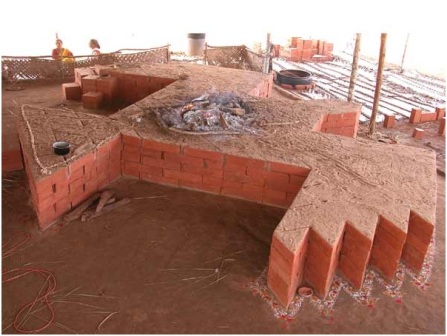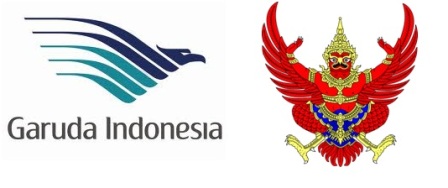Ancient Tamil kings followed Vedic customs in their daily life. They respected the Vedas and performed Yagnas/fire ceremonies like the Rajasuya and the Aswamedha. The oldest Tamil book available today is Tolkappiyam, a grammatical treatise. The book says that the Vedic Gods Indra, Varuna, Vishnu were worshipped along with Durga and Skanda. Vedic deities were the gods assigned to three of the four Tamil land divisions. For Marutham-Indra, Neithal-Varuna and Mullai- Vishnu. Skanda and Durga were the deities for Kurinji and Palai respectively.

Fire Altar, Kerala
Mudukudumi Peruvazuthi, one of the earliest Pandya kings had the epithet of “The King Who Performed Several Yagas”. In fact that was his greatest achievement. He probably even performed the Aswamedha Yagna. His country was full of Yupa posts. (Purananuru verses 6, 9, 16 ).They treated Vedic culture as their own culture. The Pandya king was praised for holding his head high except in two situations: one is in the temple and second, before Brahmins. He would bow to only these two in the whole world! Another Pandya king of Madurai was praised for awaking to the Vedic chants of the Brahmins where as other kings wake up to the cry of fowl. (Mankudi Maruthn in Madurai Kanchi). Another king Nalliakodan says that his palace doors were always open to Brahmins (Ref. Sirupan Atruppadai).
Kalidasa, one of the world’s greatest playwrights and the most celebrated Indian poet for his 1000+ beautiful similes mentioned the Pandya king and Agastya in consecutive slokas in his Raguvamsa, which indicates a close relationship that ran for thousands of years. The commentators mention Avabruda Snanam which is done during the Aswamedha Yagna.
The grand old lady of Tamil Sangam period poetess Avvaiyar praised the unity of the three great kings Chera, Choza and Pandyas on the occasion of Rajasuya Yagnam of Perunar Killi (Puram verse 367)
Why did he walk SEVEN STEPS?
The most interesting reference is about the greatest of the ancient Cholas Karikalan by Mudathama Kanniyar. Karikal Peruvalathan is dated 1st century BC. (Please read my article Why British Judges follow Karikalan?). There are two interesting references to show that Karikalan followed the Vedic customs. He was praised as the one who walks with his guest SEVEN STEPS before seeing them off (Line 166 ,Porunar Atrupadai). Rig Veda says that a friend must be seen off after walking seven steps. Walking Seven Steps (Saptapadi) is an important ceremony in Hindu marriages as well. If both any two friends or a couple walk the seven steps together, their bond last for a lifetime.
This is the meaning of the Sanskrit Saptapadi mantra in marriage:
Now let us make a vow together. We shall share love, share the same food, share our strengths, share the same tastes. We shall be of one mind, we shall observe the vows together. I shall be the Samaveda, you the Rigveda, I shall be the Upper World, you the Earth; I shall be the Sukhilam, you the Holder - together we shall live and beget children, and other riches; come thou, O sweet-worded girl
"We have taken the Seven Steps. You have become mine forever. Yes, we have become partners. I have become yours. Hereafter, I cannot live without you. Do not live without me. Let us share the joys. We are word and meaning, united. You are thought and I am sound. May the night be honey-sweet for us. May the morning be honey-sweet for us. May the earth be honey-sweet for us. May the heavens be honey-sweet for us. May the plants be honey-sweet for us. May the sun be all honey for us. May the cows yield us honey-sweet milk. As the heavens are stable, as the earth is stable, as the mountains are stable, as the whole universe is stable, so may our union be permanently settled."
Eagle Shaped Altar
The second reference is that Karikalan did a Yagna with an EAGLE-SHAPED FIRE ALTAR (Yaga Kunda). Poet Karunkuzalahanar praised Karikalan for setting up eagle shaped fire altar and a Yupa post in Puram verse 224. When he did this he consulted the Brahmins in his court and all his wives were with him during the Yagna, the poet added.
For important fire ceremonies such as the Soma Yaga, the Athirathra and the Aswamedha the fire altar is set up with 10,008 bricks or 1,008 bricks (Please read my article Hindu’s Magic Numbers). Each brick is cleaned ritually and mantras are chanted while the eagle shape fire pit is constructed. The altar is sprinkled with gold chips. If it is an Aswamedha Yagna the altar that is constructed is three times bigger.
In the Valmiki Ramayana we get more details about the Aswamedha performed by King Dasaratha. Gupta Kings issued gold coins after they performed the Aswamedha. Pandya coins were excavated featuring a horse on its side. This proves that they performed the Aswamedha. All credit for this goes to Mudukudumi Peruvazuthi.

Thailand Emblem
The Eagle is the King of Birds. Lord Krishna says in Vibhuti Yoga of Bhagavad Gita that among the birds, he was the eagle. Garuda/eagle was his vehicle as well. The Eagle is used as an emblem throughout Western countries, including the USA. It is Thailand’s national emblem. Though Indonesia is the largest Muslim country in the world, it has named its national airlines after Vishnu’s vehicle Garuda.
Mankudi Kizar in Puram 29 praised Thalaialangkanathu Neduncheziyan for performing a fire ceremony .Dr R Nagaswamy, famous historian and archaeologist has given a long list of all the Yagas done by the Tamil kings and the Pallava kings in his book (Yavarum Kelir page 78 to 82). Almost all the Chera kings listed in Pathitru Pathu performed several yagnas. It gives a lot of detail, such as the fasting done by the kings before the ceremonies. Cheran Chenguttuvan even released all the prisoners in his jails to mark this occasion.
Velirs claim that they were born in Fire pits. They belonged to the Agni clan. Several clans in Gujarat, Punjab and Rajasthan also claimed themselves as fire-born. One famous Maya King’s name was Fire-Born.
Pallavas were powerful and they performed the famous Aswamedha (Horse Sacrifice) to establish their political superiority. If we look at the epigraphs and copper plates of that time, they give a long list of the Yagas they performed and the donations they gave on such occasions. Rajathi Rajan I performed an Aswamedha according to his epigraphs. Foreign scholars, with their mischievous propaganda of Aryan Dravidian divide distorted Indian history beyond recognition. They made us believe that there were two different cultures existing in India during ancient times. Anyone who studies our ancient literature without the Aryan Dravidian prejudice will find one culture and unity of thought throughout its 5,000 year history from the northernmost Himalayas to the southernmost oceans. The minute our scholars realise this truth, they will find the key to the Indus script as well.
Finally, a twelve day Athirathram Yagna was recently performed in Kerala (April 2011) in Panjal near Thrissur. The eagle-shaped fire altar was set up with 1,110 specially designed bricks. Frits-Staal, Indologist and Emeritus Professor of Philosophy, University of California, Berkley attended the ceremony with a group of scholars and scientists to study the effects on the environment and biosphere.